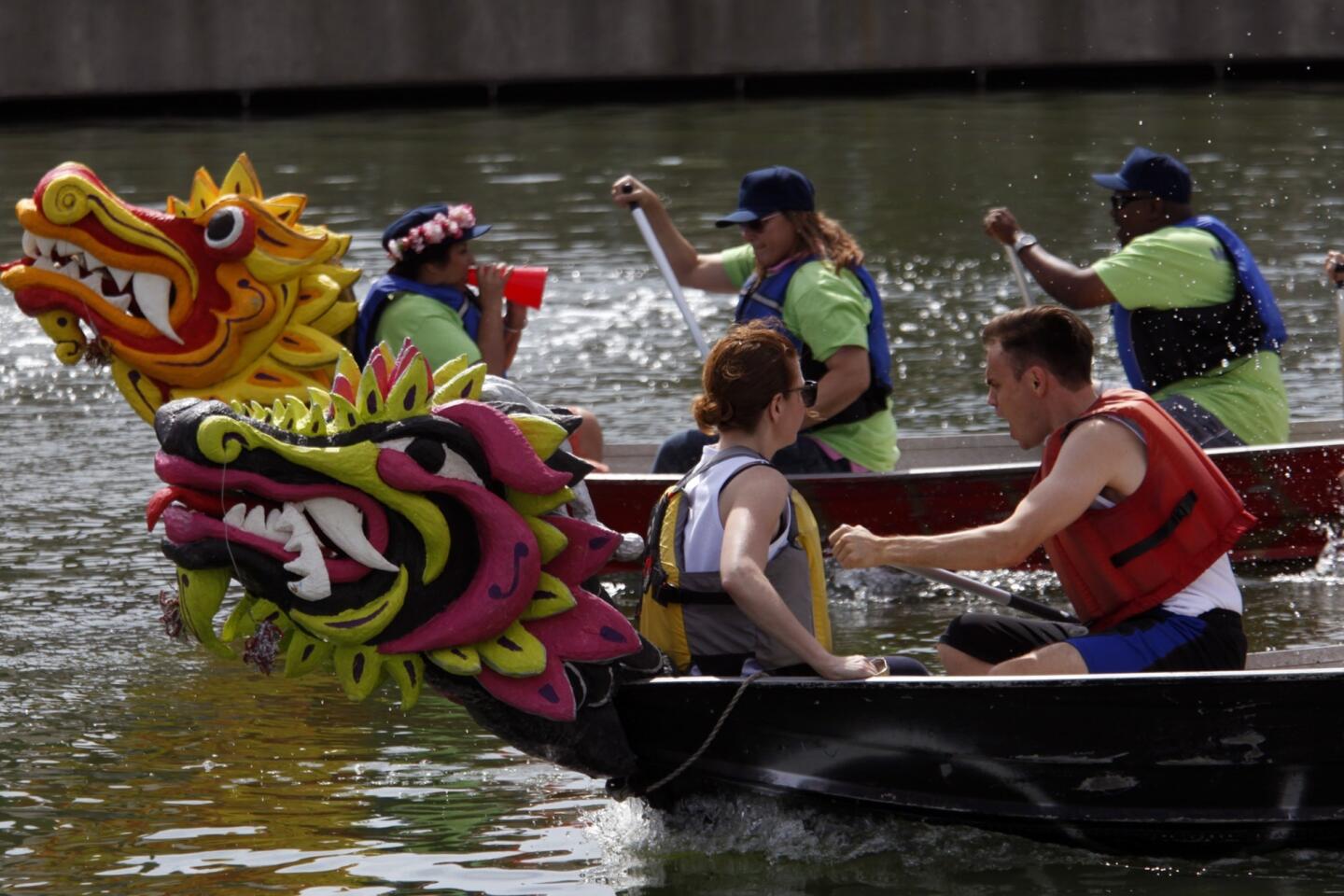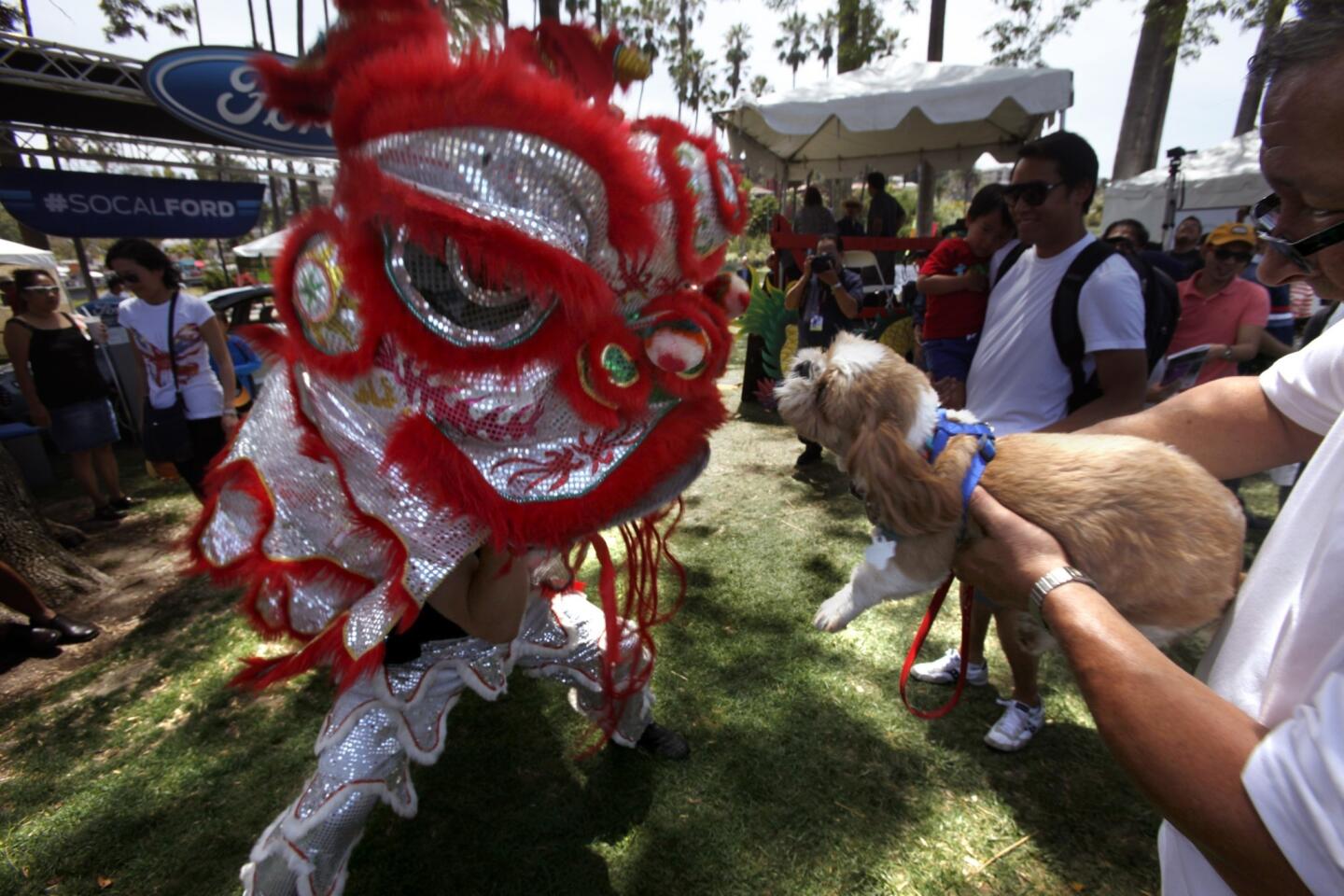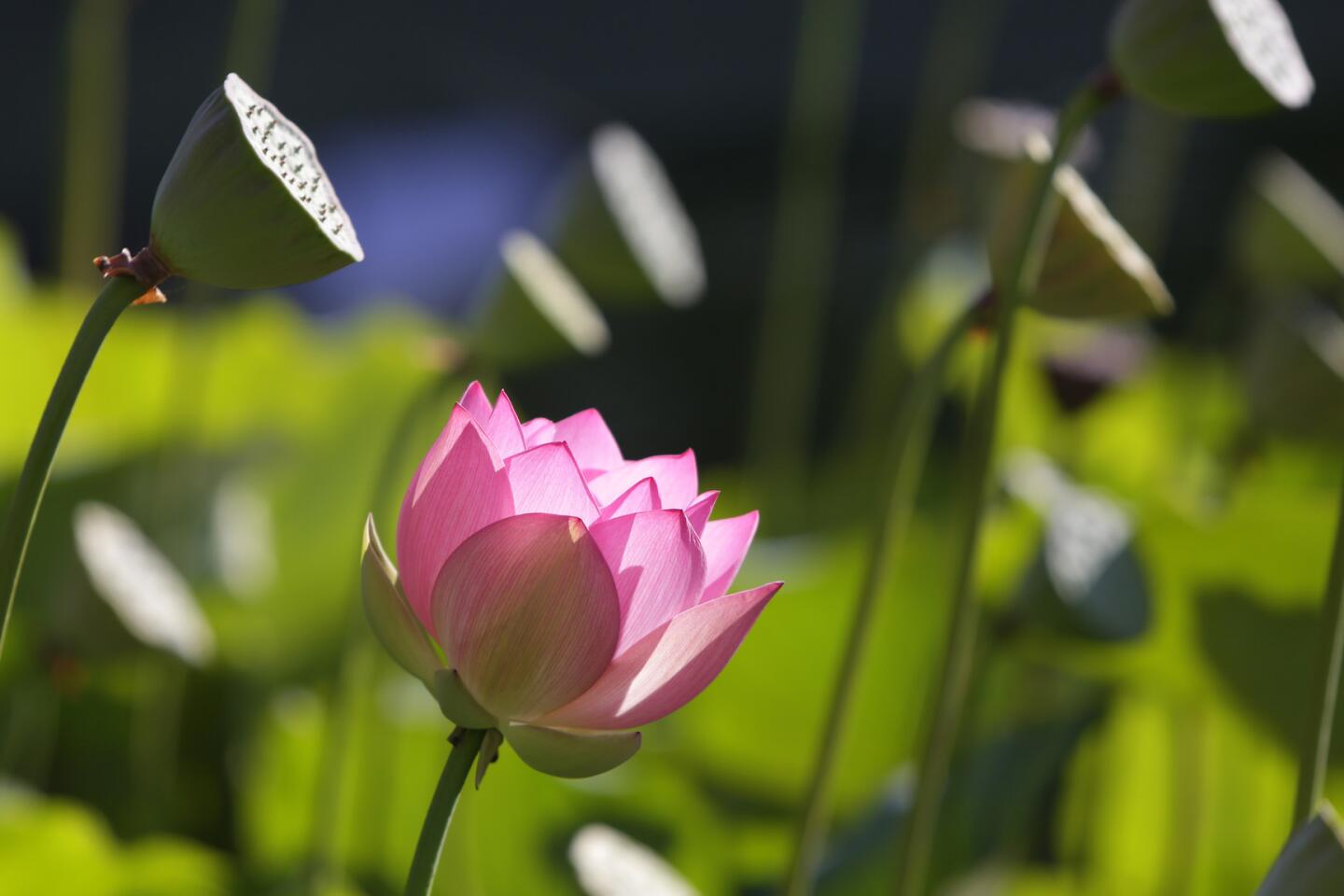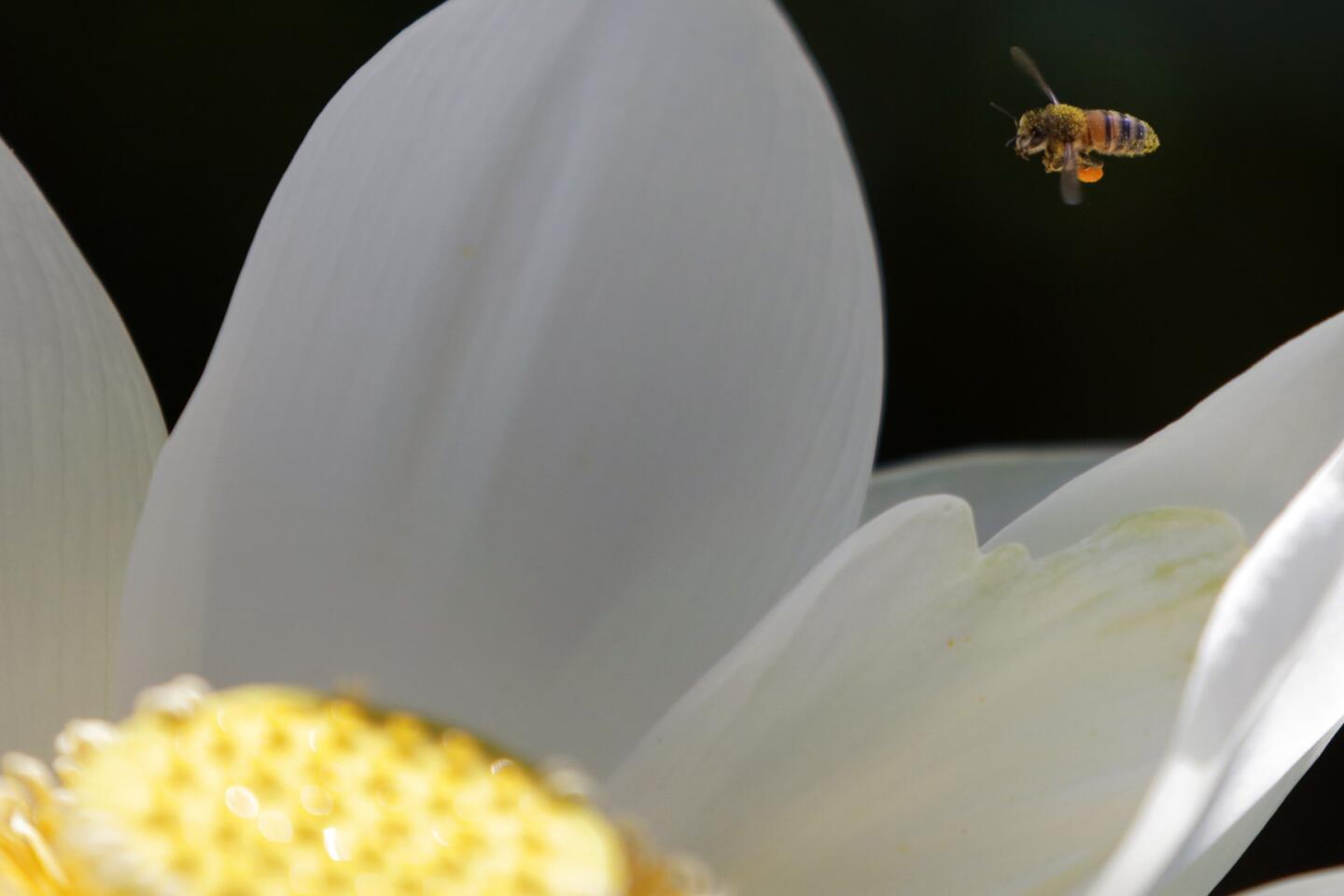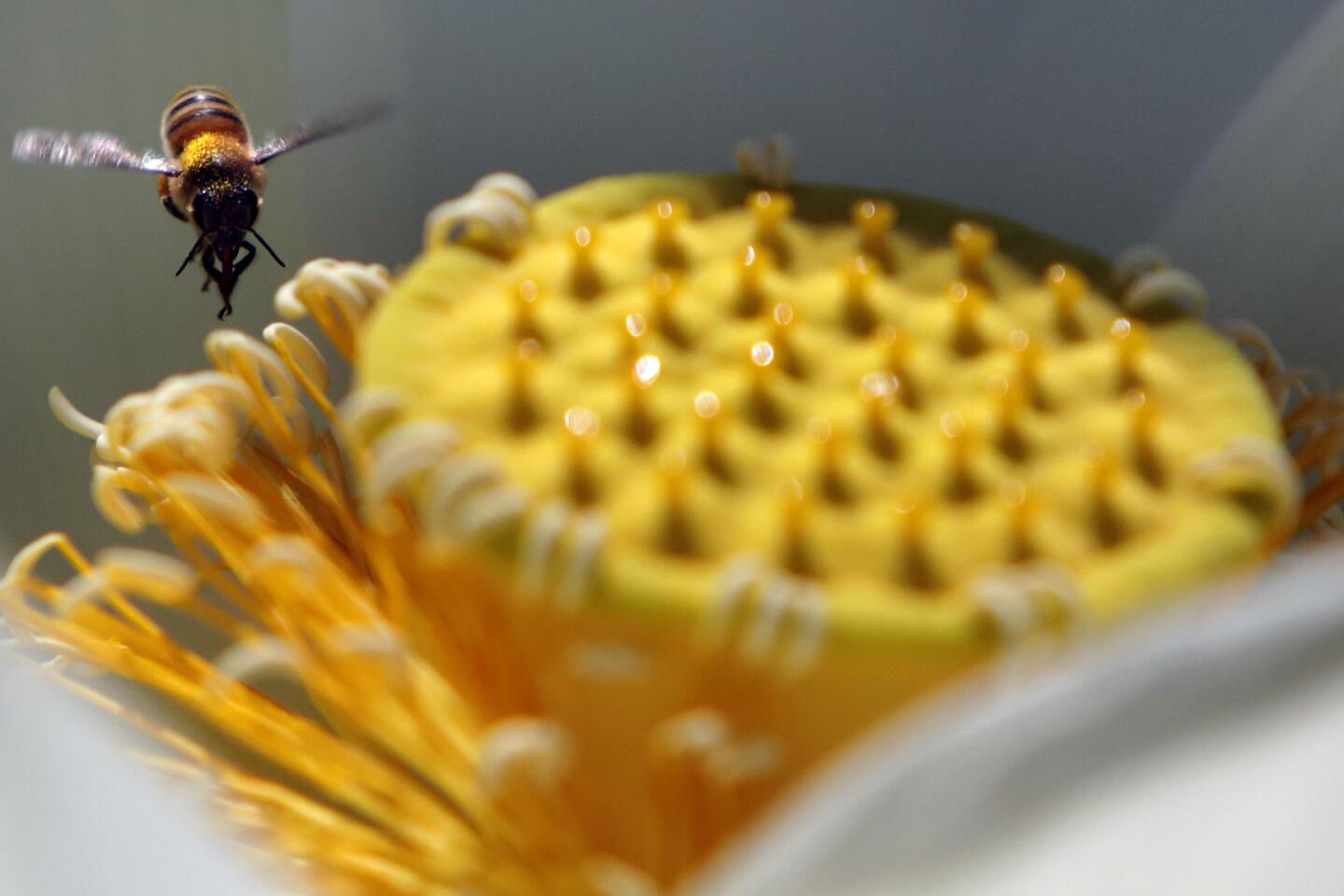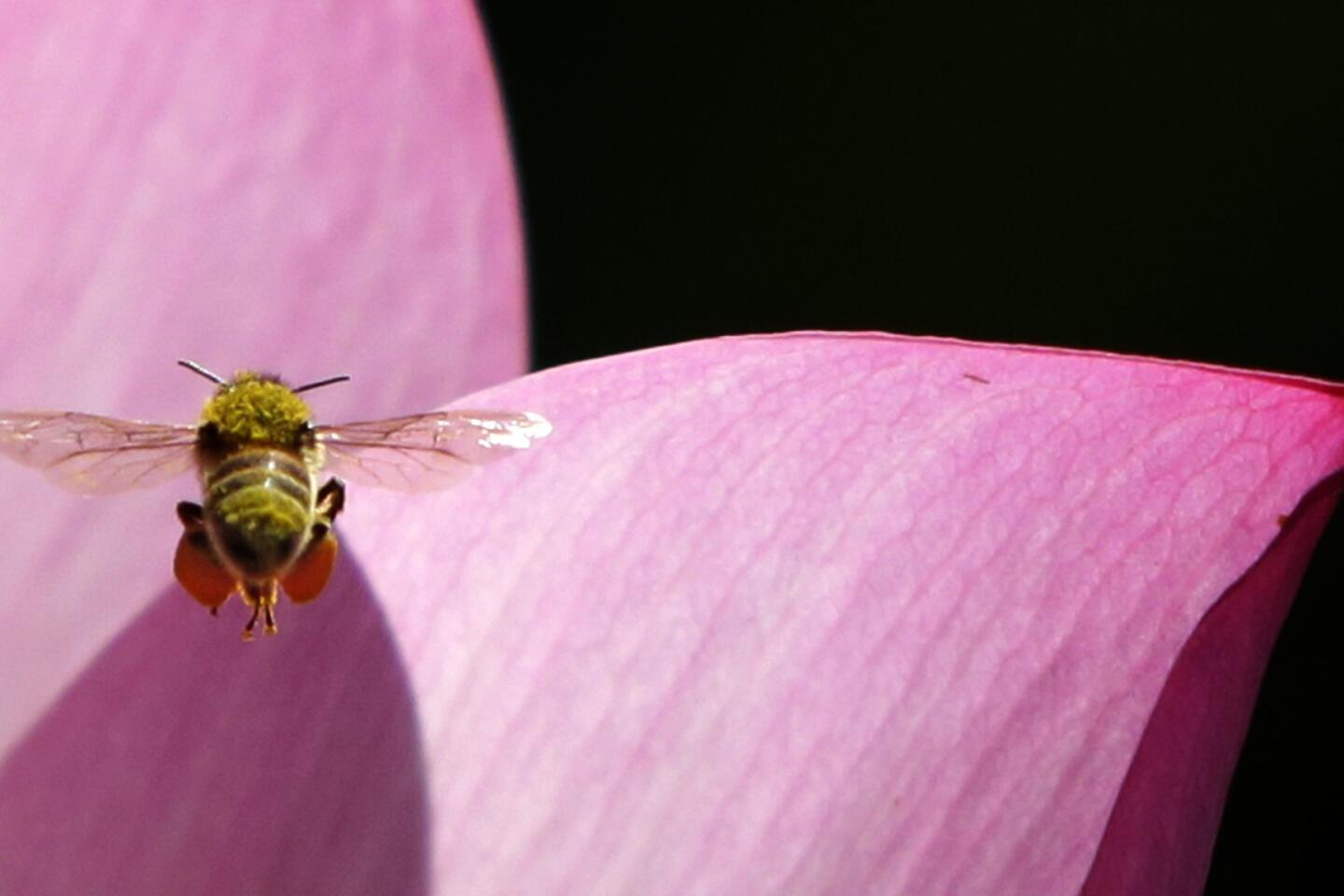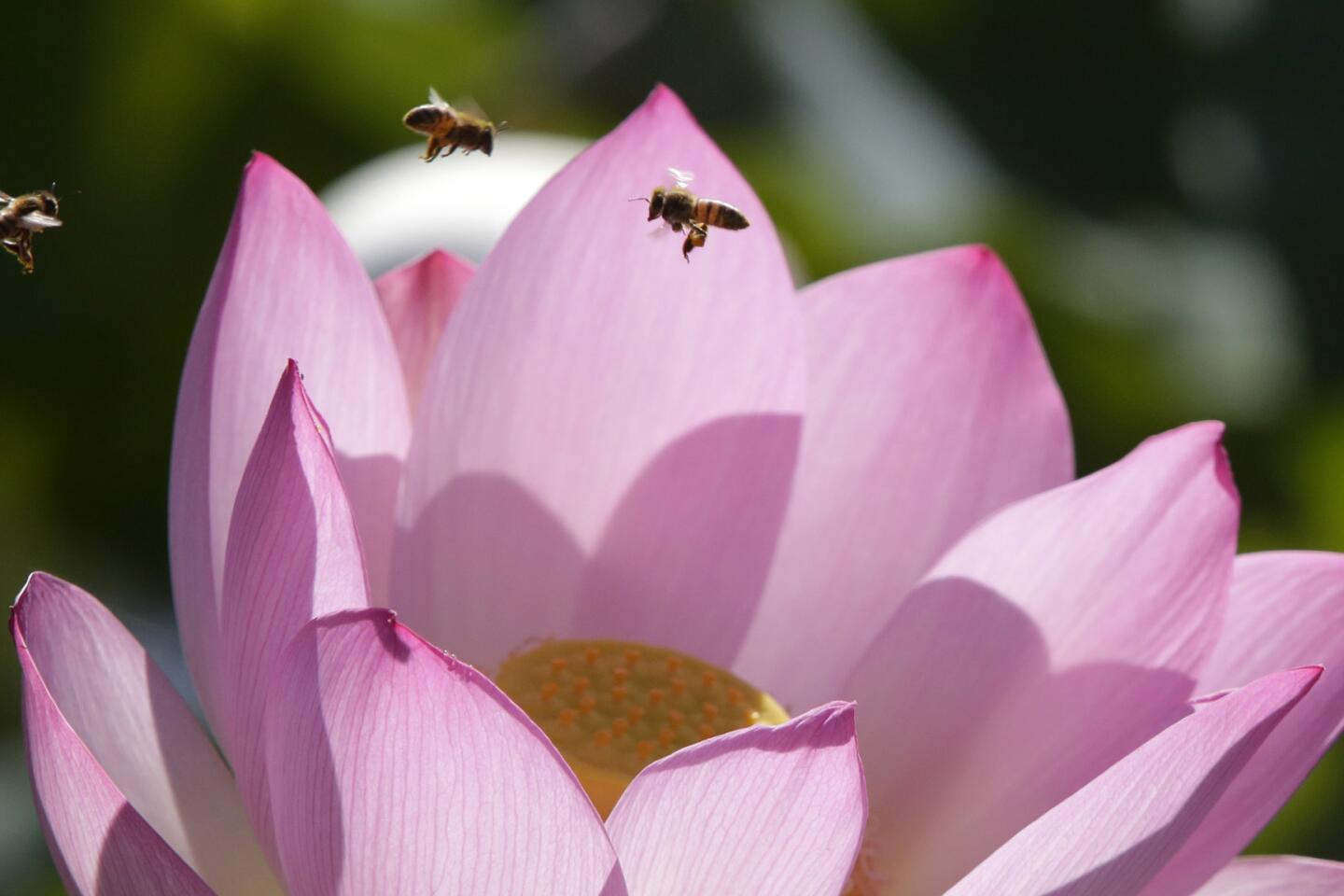Lotus Festival returns to Echo Park Lake
- Share via
The Lotus Festival is back at newly restored Echo Park Lake.
Festivities kicked off Friday night with music and a movie premiere of a 24-minute film on the history of Echo Park, which lies just west of downtown Los Angeles.
The celebration continues Saturday and Sunday, beginning at noon and runs until 9 p.m. and 8 p.m. respectively.
The event is sponsored by the city’s Department of Recreation and Parks and includes food, music and boat races. But the real star of the festivities are the lotus flower beds, which are in full bloom.
The festival made its debut in 1975 and is held in July to coincide with the blooming of the flowers that are cultivated on the lake beds by city park crews. The celebration was designed to promote awareness of the contributions of Asian Americans in the community, and this year will honor the culture and traditions of the Filipino community, city officials said.
Echo Park Lake began as a man-made reservoir, and city fathers added the park more than a century ago, creating a green haven at what was then the city’s edge. The lotuses showed up in the 1920s; history’s fuzzy on where they came from and who put them in the lake. Before long, the blush- and cream-colored flowers and bright green, coffee-filter-shaped leaves blanketed the lake’s northern tip.
As the hearty flowers spread, so did the city’s desire to protect and honor them.
In the spring of 1929, the parks department banned “all the ducks and two swans on the lake at Echo Park,” according to an article in the Los Angeles Times. The birds’ indiscretion? “Dining on lotus shoots with such avidity that the plants do not have any chance to develop.”
By the 1970s, the flowers were celebrated in the annual festival. The neighborhood council has since used the lotuses in its logo, and an artist featured them in a good-sized section of the mural that curves around the clinic at Echo Park Avenue and Sunset Boulevard.
About seven years ago, the flowers started to shrivel and the leaves began to brown. By 2008, they had disappeared. Some people blamed the lake’s dirty water, others accused natural predators -- fish, turtles and crawfish. A crew of biologists did a study, but they never pinpointed a cause.
In 2011, the man-made reservoir was closed while the lake and park underwent a $45-million restoration. It reopened in June of last year.
The work was financed with a $500-million water quality bond issue that city voters approved in 2004; the reconstruction cost about $20 million less than originally anticipated, officials said. The lake upgrade included creating four acres of wetlands at its edge and construction of new boardwalk embankments for sitting and viewing. The lake’s famous lotus plants, killed off in the past by algae and pollution, were replaced by 376 others.
More to Read
Sign up for Essential California
The most important California stories and recommendations in your inbox every morning.
You may occasionally receive promotional content from the Los Angeles Times.
